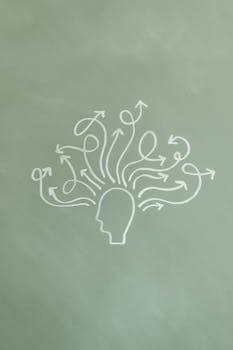
More Mental Health Articles
Understanding ADHD and ADD: What’s the Difference and Are They the Same?

Many people often wonder about the difference between ADHD and ADD. These terms are frequently used interchangeably, yet they carry distinct meanings in the realm of mental health. Both ADHD (Attention-Deficit/Hyperactivity Disorder) and ADD (Attention-Deficit Disorder) describe attention-related disorders, but with subtle differences that are essential to understand.
Understanding the Difference Between ADHD and ADD
To clarify, ADHD is a broader term that encompasses several types of attention-related challenges. On the other hand, ADD is an outdated term previously used to describe a subtype of ADHD, focusing primarily on inattention rather than hyperactivity. Essentially, all types of ADD fall under the ADHD category today.
ADHD can present itself in three major subtypes: inattentive, hyperactive-impulsive, and combined. The inattentive type, which people often referred to as ADD, is characterized by symptoms of inattention, such as difficulty focusing, disorganization, and forgetfulness. In contrast, the hyperactive-impulsive and combined subtypes include hyperactivity and impulsivity symptoms.
Symptoms and Diagnosis
Recognizing symptoms early can aid in effective diagnosis and management. Common signs of ADHD include persistent patterns of inattention and/or hyperactivity-impulsivity that interfere with functioning or development. Symptoms can appear in various settings, such as home, school, or work environments, and often include:
- Inattention (e.g., making careless mistakes, struggling to sustain focus, and being easily distracted)
- Hyperactivity (e.g., fidgeting, inability to stay seated, and excessive talking)
- Impulsivity (e.g., interrupting others, acting without thinking, and impatience)
Diagnosis typically involves a comprehensive evaluation conducted by a healthcare professional. They assess symptoms based on specific criteria outlined in the Diagnostic and Statistical Manual of Mental Disorders (DSM-5).
Is ADD and ADHD the Same?
Is ADD and ADHD the same? As mentioned, ADD is simply an outdated term for one of the subtypes of ADHD, specifically the inattentive type. Over time, mental health professionals have adopted ADHD as the universal term that encompasses all types of attention deficit disorders. This change helps provide more clarity and consistency in diagnosis and treatment.
Managing ADHD and ADD
Management strategies for ADHD involve a combination of behavioral therapy, medication, and lifestyle modifications. Effective treatments are tailored to the individual’s specific symptoms and needs. Behavioral therapies teach patients skills such as time management and organizational techniques. Medication, such as stimulants, may help manage symptoms in some cases.
Additionally, lifestyle strategies that enhance focus and reduce stress can be beneficial. Mindfulness practices, for example, have shown promise in improving attention and reducing hyperactivity. For more insights into achieving a better balance through mindfulness, consider exploring these mindfulness practices.
The Role of Support Systems
Support systems play a crucial role in managing ADHD. Educators, parents, and peers can provide significant assistance by understanding the condition and offering appropriate accommodations. In educational settings, individualized education programs (IEPs) or 504 plans can help in providing necessary support for students with ADHD.
At home, structured routines and clear communication can make a significant difference. Parents are encouraged to foster environments that emphasize organization and consistency, which helps reduce the prevalence of inattention and impulsivity behaviors.
Conclusion
Understanding the difference between ADHD and ADD involves recognizing that ADD is part of the broader ADHD category. The key is in acknowledging the nuances and ensuring that individuals receive appropriate support and treatment. For comprehensive and credible details about ADHD, visit the Wikipedia page on Attention Deficit Hyperactivity Disorder.
- ADHD encompasses various subtypes, including what was once termed ADD.
- Symptoms include inattention, hyperactivity, and impulsivity.
- Diagnosis requires a professional evaluation to distinguish the specific subtype.
- Management typically involves a mix of therapy, medication, and lifestyle changes.
- Support from family and educational systems is critical to managing ADHD effectively.
What are the primary symptoms of ADHD?
The primary symptoms of ADHD include inattention, hyperactivity, and impulsivity. These symptoms can manifest in various settings and affect daily functioning.
How is ADHD diagnosed?
A healthcare professional diagnoses ADHD through a comprehensive evaluation, which includes gathering information on symptoms and behaviors. Many professionals use the DSM-5 criteria for a guided assessment.
Can adults have ADHD?
Yes, adults can have ADHD. While symptoms often start in childhood, many people are not diagnosed until later in life. Adult ADHD may present differently than in children, often emphasizing organizational and task management challenges.
Is medication the only treatment for ADHD?
No, medication is not the only treatment. Behavioral therapies, counseling, and lifestyle changes are also effective. Treatment plans are usually customized based on individual needs.
How can I support someone with ADHD?
Supporting someone with ADHD involves understanding their challenges, being patient, and helping them create a structured and organized environment. Encouraging mindfulness and providing resources tailored to their needs can also be beneficial.
Other Articles You May Find of Interest...
- Steps Anyone Can Take To Reduce Stress And Mental Fatigue
- Understanding ADHD and ADD: What’s the Difference and Are They the Same?
- Can Anxiety Lead to Daily Chest Pain?
- 7 Best Practices for Treating Your Anxiety
- The Truth Behind Pathological Liars: Understanding Their Behavior and Impact
- Recognizing the Hidden Signs of Complex PTSD Symptoms
- Can Lamictal Help Manage Anxiety Symptoms Effectively?














